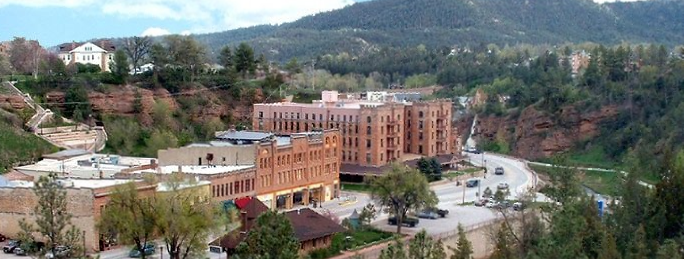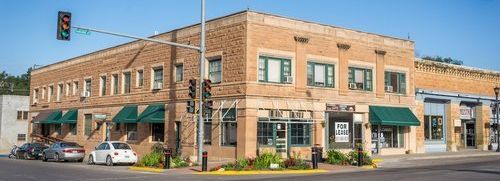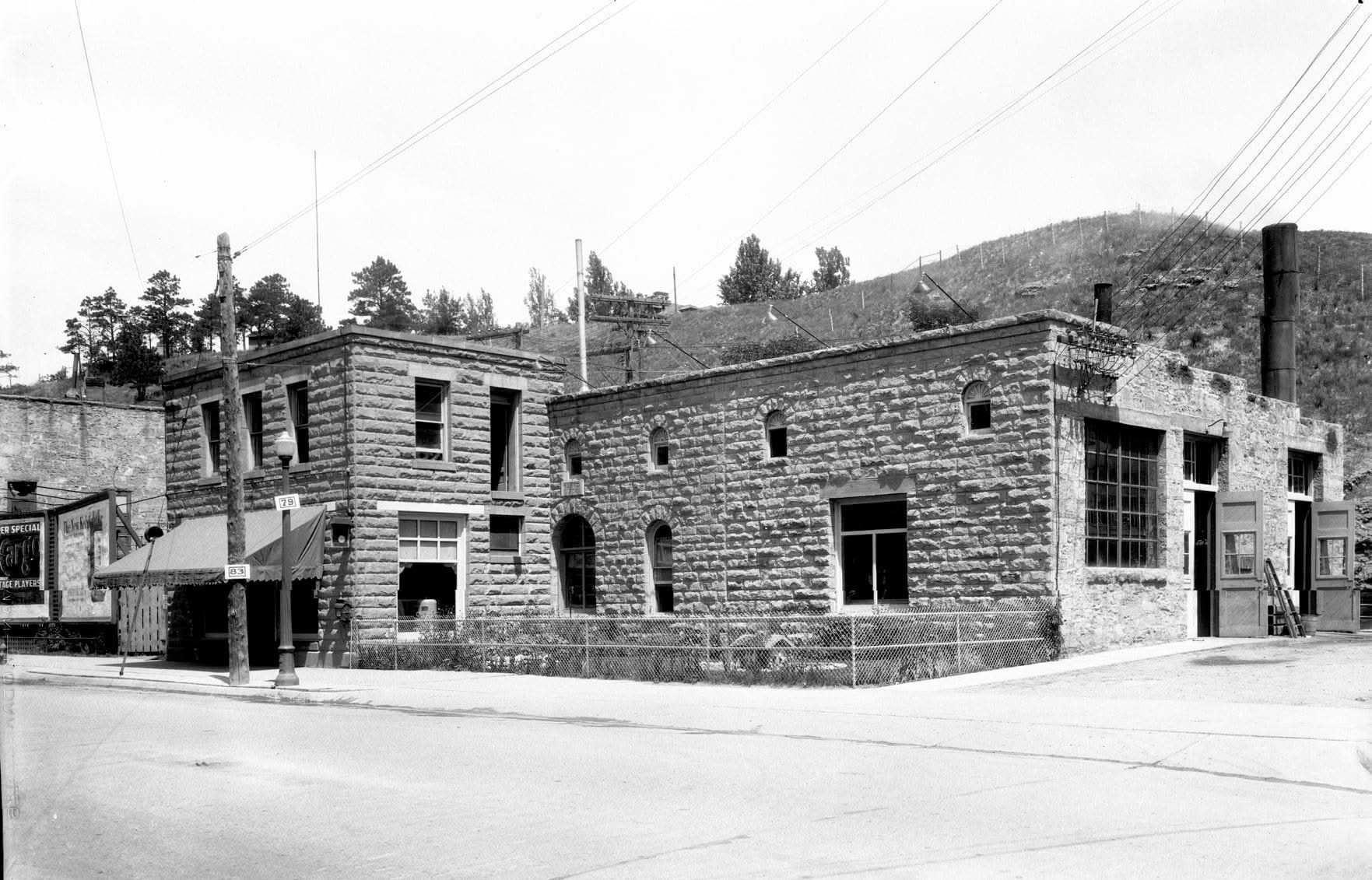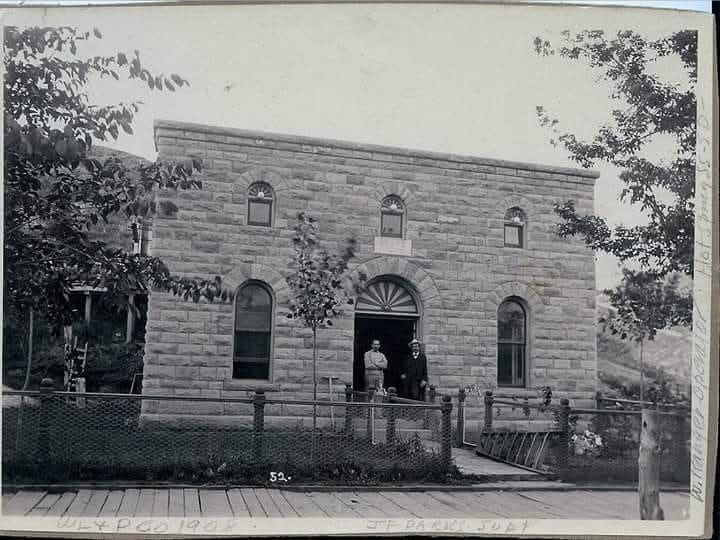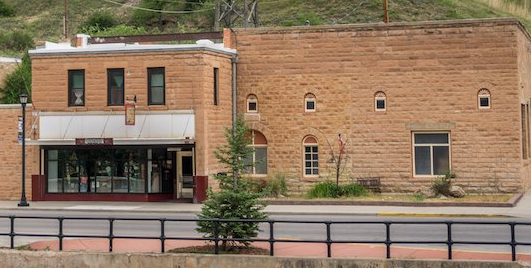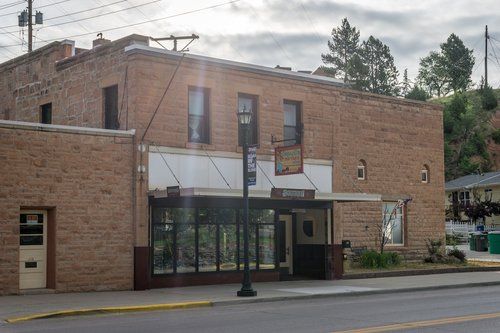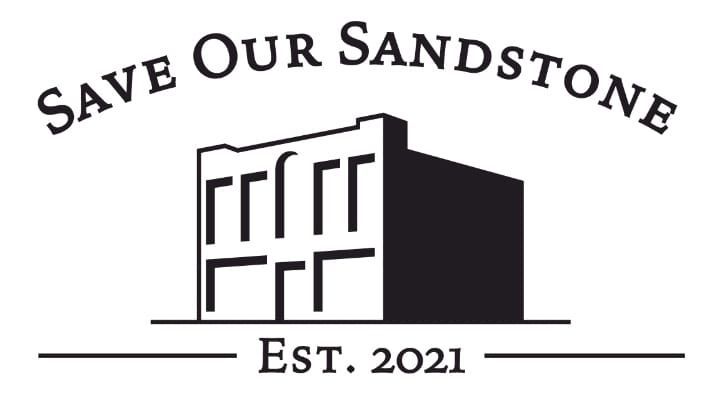Water, Light & Power Company
🧱 Water, Light & Power Company (Power House)
Address: 401 North River Street, Hot Springs, SD
Built: 1902 (expanded 1914)
First Occupant: Water, Light & Power Company
Current Use (2025): Commercial/utility history site (private ownership)
Sandstone Quarry: Evans Quarry
Architect: Unknown
Contractor: Ed Davis
Architectural Style: Early 20th-century sandstone industrial
📜 Historical Overview
Constructed in 1902, the Water, Light & Power Company building served as the central hub of Hot Springs’ early utility services. Contractor Ed Davis began work shortly after laying the foundation that summer.
In 1914, a major expansion added adjoining office space, praised by local newspapers as “a handsome ornament to River Avenue,” built of stone “quarried from our own quarries.” Given Fred T. Evans’ financial backing of the utility company and his quarrying interests, the stone is confirmed to have come from the Evans Quarry.
Before electrification, Hot Springs relied on kerosene or gas lamps for street lighting, requiring lamplighters to manually operate them. By 1894, the city had electric streetlights powered by a dynamo-driven system using water turbines — a cutting-edge innovation for a community of its size.
From the 1890s onward, local engineers harnessed hydropower from Fall River to operate dynamos and pumps for both electricity and municipal water service. Fred T. Evans championed this infrastructure, blending civic progress with entrepreneurial ambition.
🏛 Architectural Notes
- 1902 Original Structure: Finely cut sandstone from Evans Quarry
- 1914 Expansion: Added southern office space; round-arched windows with fan-top lights
- 1920s South Wing: Blended seamlessly with original style
- 1940s Remodel: Carrera glass storefront and oval entrance window, reflecting Art Deco influence
- 1950s North Wing: Smaller-cut sandstone, visually marking later construction phase
These architectural evolutions track the company’s growth alongside Hot Springs’ expanding utility systems.
📍 Later Uses & Current Status
Although no longer functioning as the city’s utility hub, the Power House remains one of Hot Springs’ most intact sandstone utility buildings — a durable symbol of the city’s early technological achievements.
🔍 Research Notes & Requests
Save Our Sandstone is still seeking:
- Original floor plans or machinery layout for the 1902 and 1914 phases
- Historic photographs of the building in operation
- Documentation of post-utility commercial uses
QR Code Info:
Built in 1902, the Power House harnessed Fall River’s hydropower to power Hot Springs’ early electric streetlights. Expanded in 1914 with locally quarried Evans sandstone, the building reflects the city’s early adoption of electrification and municipal water systems. It served as the utility hub for many years before transitioning to private ownership.
-
City skyline
Photo By: John DoeButton
